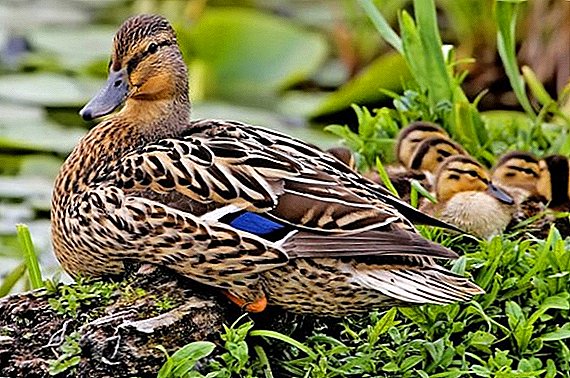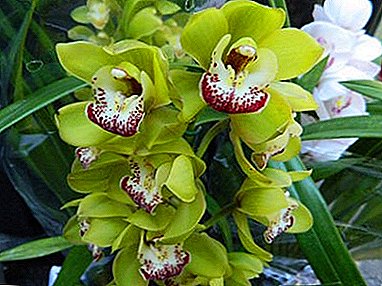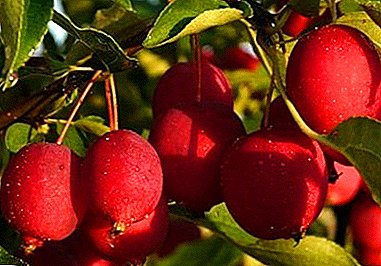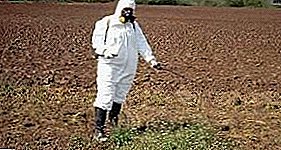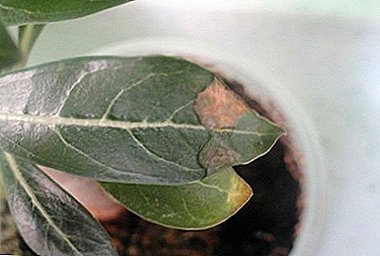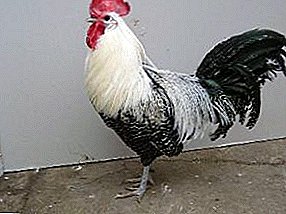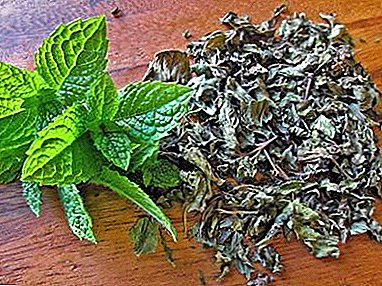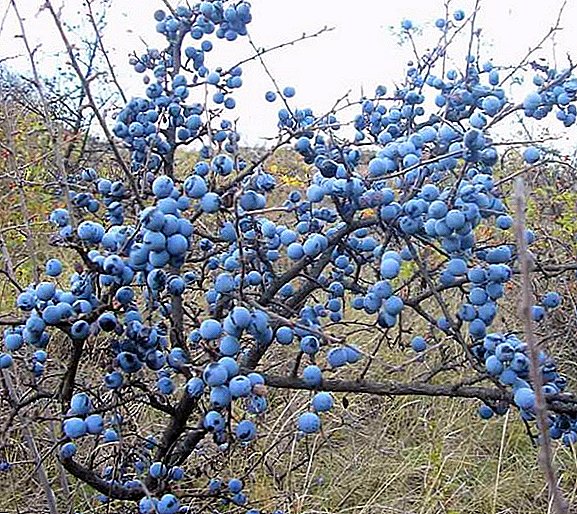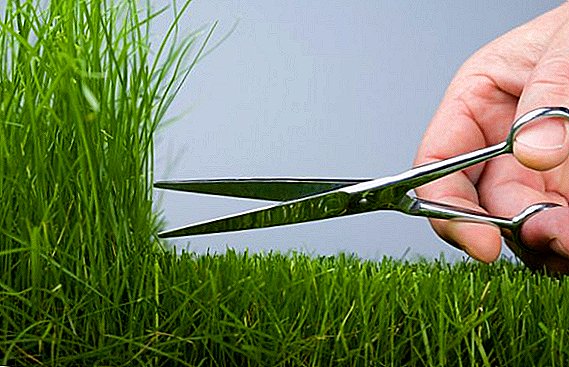 Every owner of his own land plot probably dreamed of a bright and well-groomed lawn. This detail of the landscape turns the ordinary cottage into a quiet and cozy corner from the city bustle. In addition, the presence of a large green space creates a special microclimate that favorably affects the human condition, especially during hot periods of the year. However, not many people decide to create this phytocenosis on their own site, as it requires a lot of attention, as well as additional knowledge about proper care. In this article we decided to touch on one of the main topics on this issue, namely: the main subtleties of proper lawn mowing.
Every owner of his own land plot probably dreamed of a bright and well-groomed lawn. This detail of the landscape turns the ordinary cottage into a quiet and cozy corner from the city bustle. In addition, the presence of a large green space creates a special microclimate that favorably affects the human condition, especially during hot periods of the year. However, not many people decide to create this phytocenosis on their own site, as it requires a lot of attention, as well as additional knowledge about proper care. In this article we decided to touch on one of the main topics on this issue, namely: the main subtleties of proper lawn mowing.
Purpose of lawn
Surely each of you first saw a perfectly trimmed lawn in one of the foreign films. This detail of the landscape has become a present. a symbol of prestige and wealth. That is why, in just the past few decades, the fashion for this kind of artificial gardening has rapidly spread among many compatriots. However, often the majority do not know about the main purpose of lawns.  First of all, uniform and short-cut grass cover near all sorts of architectural structures is an ideal solution for landscaping densely populated urban areas. Bright grass cover not only enhances the overall architectural value of the created landscape, but also breathes life into the gray concrete structures of cities. This is one of the main conditions for increasing the general emotional state of the population, so today densely populated territories cannot do without lawns.
First of all, uniform and short-cut grass cover near all sorts of architectural structures is an ideal solution for landscaping densely populated urban areas. Bright grass cover not only enhances the overall architectural value of the created landscape, but also breathes life into the gray concrete structures of cities. This is one of the main conditions for increasing the general emotional state of the population, so today densely populated territories cannot do without lawns.
Did you know? The history of lawns has several millennia, the first mention of this artificial landscape found in ancient Persians, Greeks and Romans.
It has grass gardening and technical value. Lawn plants are distinguished by a complex and branched root system, therefore, with the continuous cultivation of such plants, it is possible to securely secure the top layer of soil, which is a vital need on the slopes or landslide-prone areas. Grass is also an excellent air filter. Solid herbaceous plantations can absorb dangerous gaseous compounds, as well as trap dust on their surface.  In addition, lawn plants turn dense and rough soil into a soft and pleasant litter with uniform vegetation, without any weeds. Such a surface becomes absolutely safe for all sorts of street games and active pastime. That is why high-quality and well-groomed lawn cover is not only a fad, but also a really important part of any site.
In addition, lawn plants turn dense and rough soil into a soft and pleasant litter with uniform vegetation, without any weeds. Such a surface becomes absolutely safe for all sorts of street games and active pastime. That is why high-quality and well-groomed lawn cover is not only a fad, but also a really important part of any site.
Sow lawn on the site, you can independently or use ready-made rolls - grass layers on the net basis.
How to cut
For most gardeners, lawn mowing seems to be one of the easiest steps to take care of. That is why the perfect grassy coating is not found everywhere. Most gardeners make gross mistakes during grass cutting, which leads to excessive damage to the plants and even to the complete exhaustion of the vegetable mass in some areas. Next, we will examine in detail all the intricacies of this process.
How to cut for the first time
First cut should be started after reaching the grass. length not less than 8-10 cm. In order to improve the quality of crops, the procedure can be started in a later period, when the grass reaches a length of 12-13 cm. By this time the maximum number of plants will rise, and their total length will allow creating a uniform lawn. Depending on the climate and soil conditions, this time falls on different periods of May.
Starting haircut should be easy, therefore, to shorten the grass by more than 2-3 cm is not recommended, because at this stage, young plants are only aligned to the same height. In addition, the easy cutting of the tips of the blades of grass helps to stimulate the growth of young cenosis, as a result of which there is an intensive growth of plants over the entire surface, up to the complete absorption of free space.
Video: first lawn mowing
Important! Cutting the grass completely is forbidden at the first haircut, it will cause drying and death of young plants..
Cutting height
Often, when choosing the optimal height for a lawn, most plant growers rely on their own taste and preferences. However, these criteria are not the main condition for choosing the optimal grass height, since this indicator has a generally accepted framework. Cutting height, above all, depends on the type of lawn and its purpose. For decorative landscapes, the optimal grass length is 4-7 cm.  If animals are supposed to walk on the lawn, play active games, etc., the height should also be kept within 4-7 cm. In case the lawn is exposed to daily trampling (sports grounds, etc.) during operation, the grass should be cut to the mark 3-4 cm
If animals are supposed to walk on the lawn, play active games, etc., the height should also be kept within 4-7 cm. In case the lawn is exposed to daily trampling (sports grounds, etc.) during operation, the grass should be cut to the mark 3-4 cm
Important! In especially hot summer periods, the height of the lawn should be 1-2 cm higher than the standards described, this will protect the plants from drying out.
Lawn shape
In order to give the lawn the correct and beautiful outlines, you should first decide on the type of form and the total size of crops. A lawn can be created in the form of a regular square, or it can be a multi-tiered composition. The required outlines of vegetation cover are outlined with the help of small pegs, which are driven into the soil at a distance of about 20-50 cm from each other.
After the application of the contour, the shape of the plant cover is adjusted with the help of gardening equipment for weeding. This process should be approached with particular scrupulousness, since individual plant bushes very soon can grow and break the correct outline of the composition. To create a multi-tiered lawn, shearing is carried out in two stages. First, align the top layer, and then proceed to cut the bottom.  For lawn mowers use special scissors, lawn mower or trimmer. When mowing the lawnmower, you should follow a special technique for using the device. Grass cutting should be started from narrow sides, after which the procedure is carried out along the long sides of the plot. At the same time, it is necessary to move both in the forward and in the opposite direction, observing a strict parallel to each beveled strip. When trimming, the direction and course of movement of the mower is not important, so you can move from any angle and in any direction. Scissors are used for the final alignment of small areas that are difficult to access for the main equipment.
For lawn mowers use special scissors, lawn mower or trimmer. When mowing the lawnmower, you should follow a special technique for using the device. Grass cutting should be started from narrow sides, after which the procedure is carried out along the long sides of the plot. At the same time, it is necessary to move both in the forward and in the opposite direction, observing a strict parallel to each beveled strip. When trimming, the direction and course of movement of the mower is not important, so you can move from any angle and in any direction. Scissors are used for the final alignment of small areas that are difficult to access for the main equipment.
Key recommendations for achieving a perfect lawn:
- before the start of mowing, it is necessary to remove all garden tools and other items from the site, including all kinds of plant residues;
- the procedure should be carried out in the early morning or late in the evening, in warm, cloudy weather (it is strongly recommended not to cut grass in the rain);
- grass cutting should be carried out smoothly, without sudden movements and carefully, otherwise it will be extremely difficult to achieve a uniform lawn;
- if irregularities are observed at the site, then the grass should be cut at an angle to the slope direction.

Major mistakes
Today, most gardeners make many mistakes of the same type when caring for a lawn. Although, at first glance, each of them does not lead to serious negative consequences for the whole phytocenosis, but in the aggregate they are able to destroy the grass cover.
The most common among them are:
- violation of the frequency of the mowing process - leads to the formation of seeds on plants, after which the processes of natural drying of the grass are started;
- mowing the grass by more than 1/3 relative to the total length of the plants - violates the regenerative capacity of the grass, which leads to its death;
- haircut in dry weather, without pre-moistening the soil - leads to the tearing of plants along with part of the root system;
- the use of faulty devices for clipping - leads to injury to plants and their withering, which causes the loss of aesthetic value by the lawn.
How often to cut
Cut the lawn should be periodically throughout the season. The frequency of this process depends on many factors, which include the climatic features of the region, the type of plants grown, and the season. In warm weather, the grass is usually mowed once a week. During a prolonged summer drought, a slower development and growth of plants is observed, therefore, the cutting is done 1 time in 8-9 days.  And during periods of excessive precipitation or in a warm humid climate, the lawn is cut every 5 days. The last lawn trim is carried out in late October and early November. At this time, the average daily temperature drops to + 10-12 ° C, which puts the plants in a state of rest. Renew the procedure only in the next season, with an average daily temperature above +10 ° C.
And during periods of excessive precipitation or in a warm humid climate, the lawn is cut every 5 days. The last lawn trim is carried out in late October and early November. At this time, the average daily temperature drops to + 10-12 ° C, which puts the plants in a state of rest. Renew the procedure only in the next season, with an average daily temperature above +10 ° C.
Choosing a technique
Today, there are several varieties of equipment on the market that provide optimal lawn care in their own area. Among them there are both mechanical and gasoline, as well as electrical devices. Each of these types of technology has its own advantages and disadvantages, which we will discuss in more detail.
Grass shears
Lawn shears are the simplest mechanical garden care device. In their principle of operation and form, they are virtually indistinguishable from the well-known household scissors, but they have more impressive dimensions and wear resistance. Such a device is a mandatory attribute for the care of grass, regardless of the size and type of lawn.  Scissors are used for cutting grass in small areas along the paths, as well as in hard-to-reach places for mowers and trimmers (around the shop, garden decorations, etc.). For full mowing scissors do not apply.
Scissors are used for cutting grass in small areas along the paths, as well as in hard-to-reach places for mowers and trimmers (around the shop, garden decorations, etc.). For full mowing scissors do not apply.
Check out our garden shears.
Garden trimmers
The trimmer is an engine and a transfer rod, on the edge of which there is a rotating element with knives. As a knife for cutting can be used as a thick plastic fishing line, and metal discs. Often, trimmers are used for mowing small or medium-sized plots, in case mowing by a lawnmower is not rational (lawns with abundant tree vegetation, or a large number of landscape objects) or on lawns with large irregularities.
Did you know? Grass trimmer was invented in 1971 by George Bollas, an American entrepreneur from the city of Houston.
Trimmers are of two types: gasoline and electric. Electric are more popular because they do not require additional expenditure on fuel and are easy to maintain.  However, electric trimmers are often of low power, and the wire from them creates a lot of trouble. It requires an additional extension, and is constantly tangled about trees, shrubs and other obstacles.
However, electric trimmers are often of low power, and the wire from them creates a lot of trouble. It requires an additional extension, and is constantly tangled about trees, shrubs and other obstacles.
Read also about the advantages and disadvantages of gasoline and electric trimmers, as well as get acquainted with the rating of electric trimmers.
The petrol trimmer is a more mobile and powerful device, but during operation it creates serious noise and also has considerable weight, which requires good physical fitness. 
Lawn mowers
Lawn mowers are the most common grass mowing devices. They are a frame on which a rotating drum with blades is mounted. This mower allows you to quickly cut the lawn, as well as to achieve almost perfect grass height. But lawn mowers are suitable only for perfectly smooth surfaces and free from all kinds of obstacles.
Lawn mowers are mechanical, gasoline and electric. Mechanical are a simple device, driven by inertial force. Such devices are virtually silent and inexpensive, but mow the grass only with perfectly sharpened knives, as well as provide for serious physical exertion.  Electric powered by electricity. They are much more powerful and more convenient than mechanical ones, however, as is the case with electric trimmers, they require constant connection to the power grid, which complicates the process of mowing. Recently, cordless mowers have appeared on the market, however, due to the high cost of living, they are not popular.
Electric powered by electricity. They are much more powerful and more convenient than mechanical ones, however, as is the case with electric trimmers, they require constant connection to the power grid, which complicates the process of mowing. Recently, cordless mowers have appeared on the market, however, due to the high cost of living, they are not popular.
Learn more about lawn mowers: types and popular models; criteria for choosing an electric lawn mower and the top 10 best gasoline mowers; repair lawn mowers with their own hands.
Most often in the garden you can find a gasoline mower. This device allows you to quickly and accurately cut the grass of almost any height. Lawn mowers are more practical devices. Subject to the purchase of interchangeable nozzles, they can cope with small bushes or become a cultivator, snowplow, etc. The main disadvantage of the mower is a high level of noise during operation, as well as the need for expensive fuel.
Did you know? The first lawnmower was created by the English inventor Edwin Beard in 1830.
Lawn that does not require a haircut
In the last decade, so-called lawns for the lazy, which do not require constant shearing, are actively gaining popularity. They consist of special varieties of low-growing herbaceous plants, or are a complex mixture of several species. Their advantages, relative to traditional methods of growing lawns, are obvious. Caring for such lawns is reduced only to timely watering, feeding and only 3-4 leveling with a mower per season.
The most popular among such lawns are:
- field shoveler;
- meadow grass;
- grass mixture "Moorish lawn";
- grass mixture "meadow grass".




- "lawns for the lazy" are often unpretentious to the soil conditions, and also resistant to penumbra;
- such lawns are more resistant to droughts and other environmental challenges;
- in most cases, low-growing herbs instantly grow over the territory, since almost all of them are capable of fast rooting with the help of shoots.
Learn what lawns are like and how to care for lawn from white clover, red fescue, meadow fescue, styloid bryozoa, Liliput grass mixture.
Rules for the care of trimmed lawn
To achieve the perfect green lawn, timely cutting grass is not enough. As a result of this process, the plants are seriously damaged, which can disrupt the vital activity of entire areas of the lawn. Therefore, we cannot do without additional care for the damaged phytocenosis.  To do this:
To do this:
- regularly water the grass - a sufficient amount of water is the main incentive for the active growth of plants;
- be sure to feed the plants with complex fertilizers at least 3 times per season;
- periodically scrub the lawn and aerate;
- mulch the lawn - this will help level the surface, as well as additionally feed the grass;
- periodically sow the most damaged areas with fresh seeds.
Watering the lawn should be sprinkling or automatic drip irrigation.
Lawn preparation for winter and spring care
Preparation of a lawn for wintering should begin in early September.
The process consists of the following steps:
- The lawn should definitely be examined for the presence of bald spots, which must be sown with fresh seeds.
- In late September, the grass must be fed with mineral fertilizers. Phosphorus-potassium mixtures are best suited for this purpose.
- In the middle of autumn, on a sunny and dry day, it is imperative that the lawn be aerated with a fan-shaped rake. This will protect the plants from ice crust in winter.
- Last haircut should be carried out in late October and early November, after which the lawn is left alone until the next season.
Important! After the final haircut in the season, it is forbidden to walk on the grass before the snow cover appears, as the plants need to fully recover before the onset of cold weather.
Video: preparing the lawn for winter
After wintering, lawn preparation for the new season begins with the first full thaw.
The process consists of the following steps:
- After the melt water is completely absorbed into the soil, the lawn should be cleared of debris and aerated with a fan rake.
- Next, be sure to examine the area for the presence of dead bushes or bald spots. Affected areas need to dig and sow with fresh grass.
- Перед тем как температура воздуха значительно повысится, участки с просевшей почвой нужно обязательно промульчировать.
- The first spring lawn mowing is carried out when the height of the plants reaches at least 10 cm, then the lawn should be fed with ammonia fertilizers.
Video: mowing and lawn care
Grooming is one of the most important stages in lawn care, as not only the aesthetic value of the lawn depends on this process, but also its durability. Therefore, this issue should be approached with particular responsibility and expertise. Subject to all recommendations, your lawn will delight you and your loved ones with its bright green coating until the autumn.


